Get Match Ready With This Gym Workout For Football Players
This session will complement your on-field training and get you in peak condition for kick-off
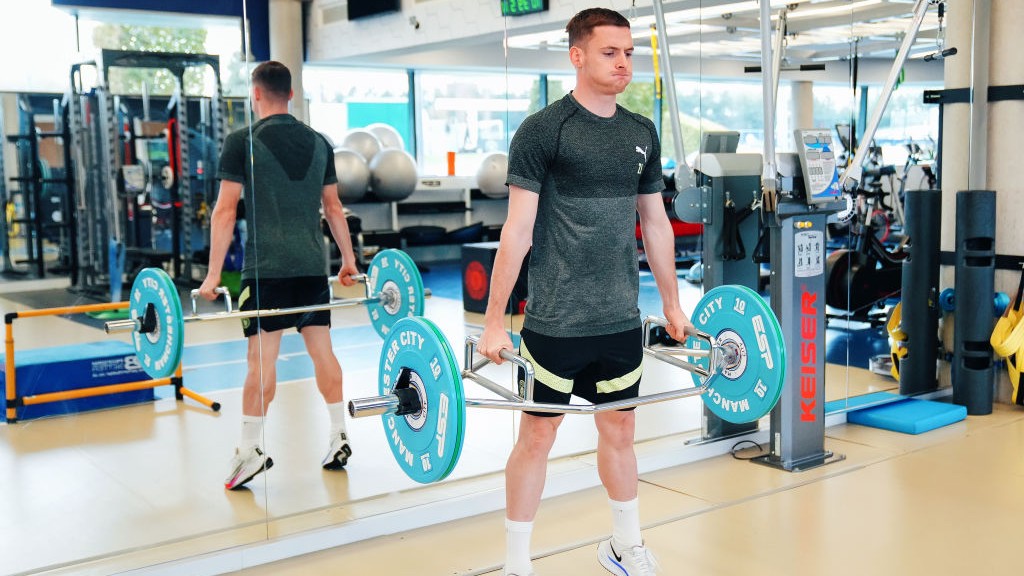
Anyone who plays football will be swept up in the excitement of the World Cup and want to win their next match handily. Thankfully, there are lots of straightforward ways to improve your performance on the pitch.
Simple tricks such as avoiding classic amateur footballer sports nutrition mistakes (like not proactively hydrating in advance of matches), learning how to fuel for match day, and following a football warm-up will give you an advantage over 90% of amateur players who won’t give these things a second thought.
Covering the fundamentals goes a long way too, as Adam Byrne, senior personal trainer at Nuffield Health, explains. “Field-based athletes [such as footballers and rugby players] need to look after their bodies holistically, focusing on sleep, rest, recovery, nutrition, field skills and weight training,” says Byrne.
There’s a pitfall with strength training for football players, however, and like football itself, it’s all to do with timing. “The bulk of the training work is done in pre-season, when strength and conditioning coaches push the athletes to improve speed, power and strength,” says Byrne. “This involves breaking down of the muscles, which causes delayed-onset muscle soreness, aka DOMS – something that absolutely needs to be avoided when the season starts!
“In season, the aim of the coaches is to maintain fitness levels of athletes and not push too hard, to avoid injury or ongoing muscle soreness. However, the ultimate aim is to prepare field athletes so they are at their peak performance in advance of sporting events and to not overload the muscles, so they are as close to 100% as possible in terms of physical condition.”
Byrne told Coach that the gym work field athletes like footballers do includes plyometric exercises such as box jumps, single-leg training, and bodyweight training such as Nordic hamstring curls, as well as free-weight exercises combining low weights with medium reps and sets to complement on-field training. He also shared an example of an in-season gym workout.
Warm-Up
1 TRX hip extension
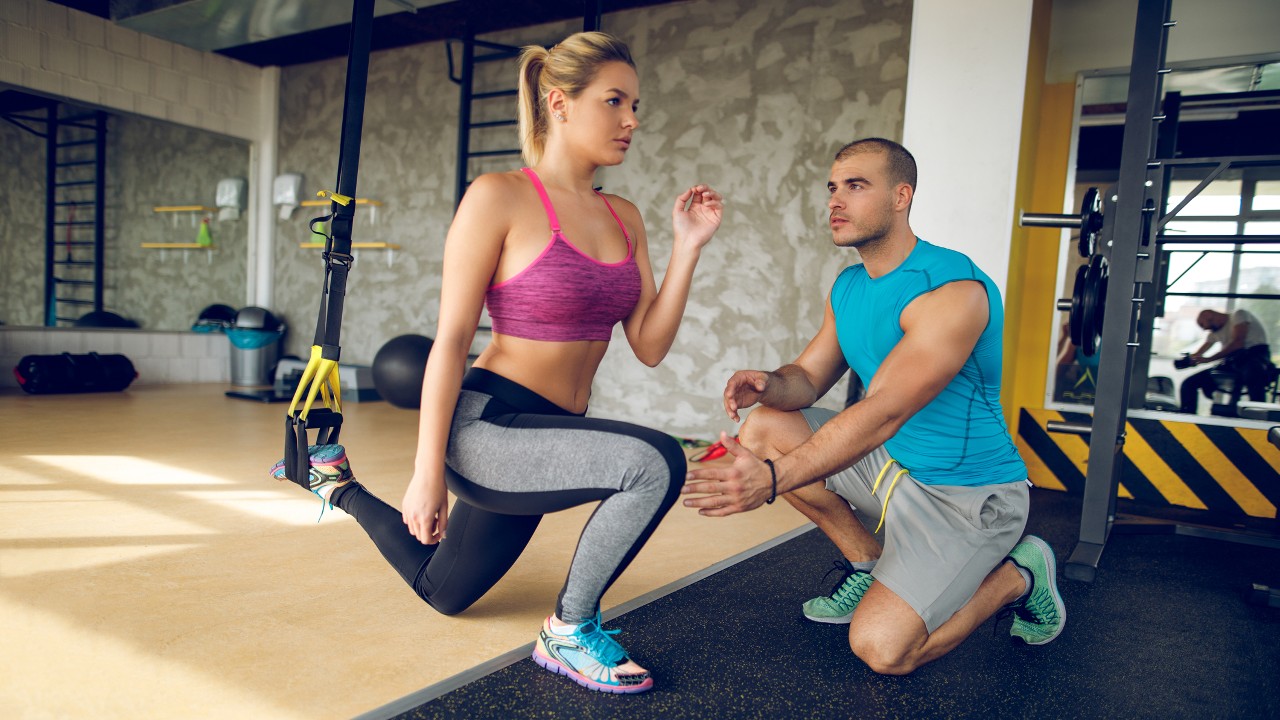
Why “This is performed on a single leg,” says Byrne, “challenging your balance while stretching the hip in the rear leg. Striking a football puts a high demand on hip flexion and extension, and this area of the body needs TLC.”
Get the Coach Newsletter
Sign up for workout ideas, training advice, reviews of the latest gear and more.
How Facing away from the TRX, place your left foot in the handle and left knee on the floor. Place your right foot on the floor in front of you with the knee bent at 90°. With a straight back and looking forwards, push your hips forwards to stretch your hip flexor. Repeat on the other side.
2 Skater jump
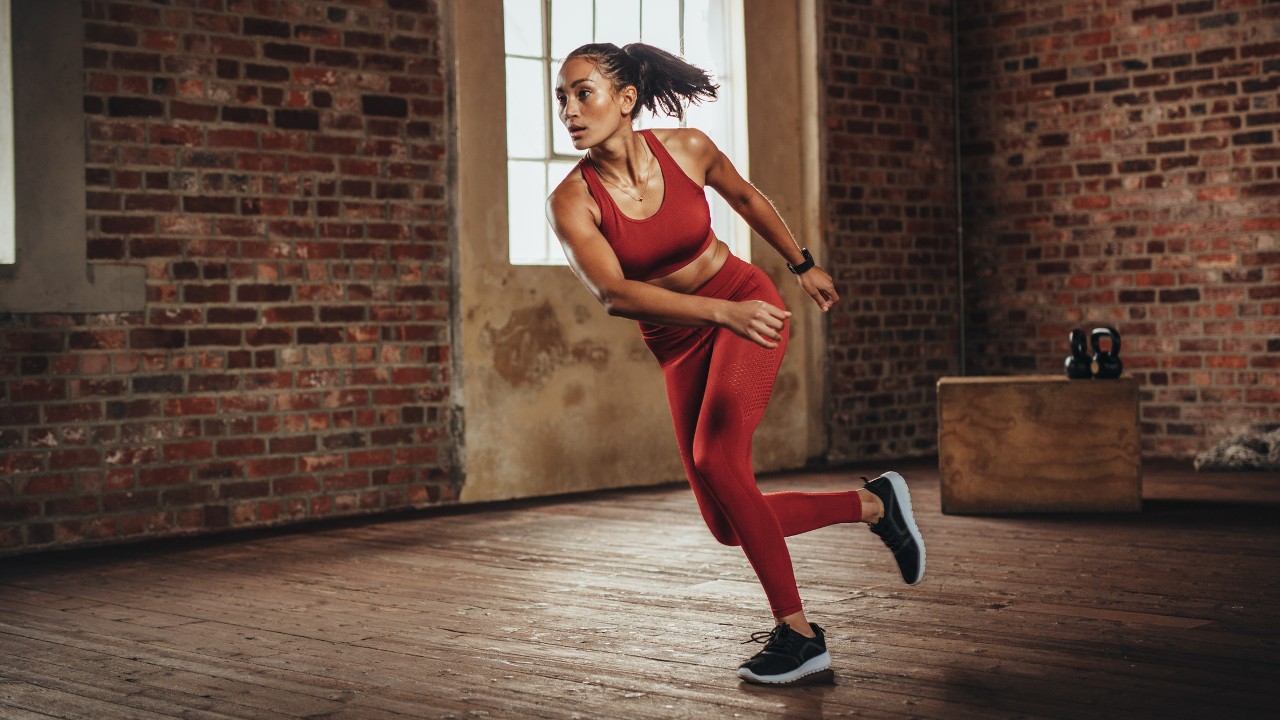
Why “For field-based athletes, movement in multiple directions is common,” says Byrne. “This exercise can increase your co-ordination and balance while helping to stabilise the knees and hips. This uses the calves, glutes, hamstrings, quadriceps and core.”
How Stand with your feet shoulder-width apart. Shift your weight over one leg and bend your knee as you bring the other leg behind you. Jump off your front foot to the side, and sweep your trailing leg behind. Keep leaping from side to side.
3 Curved treadmill running
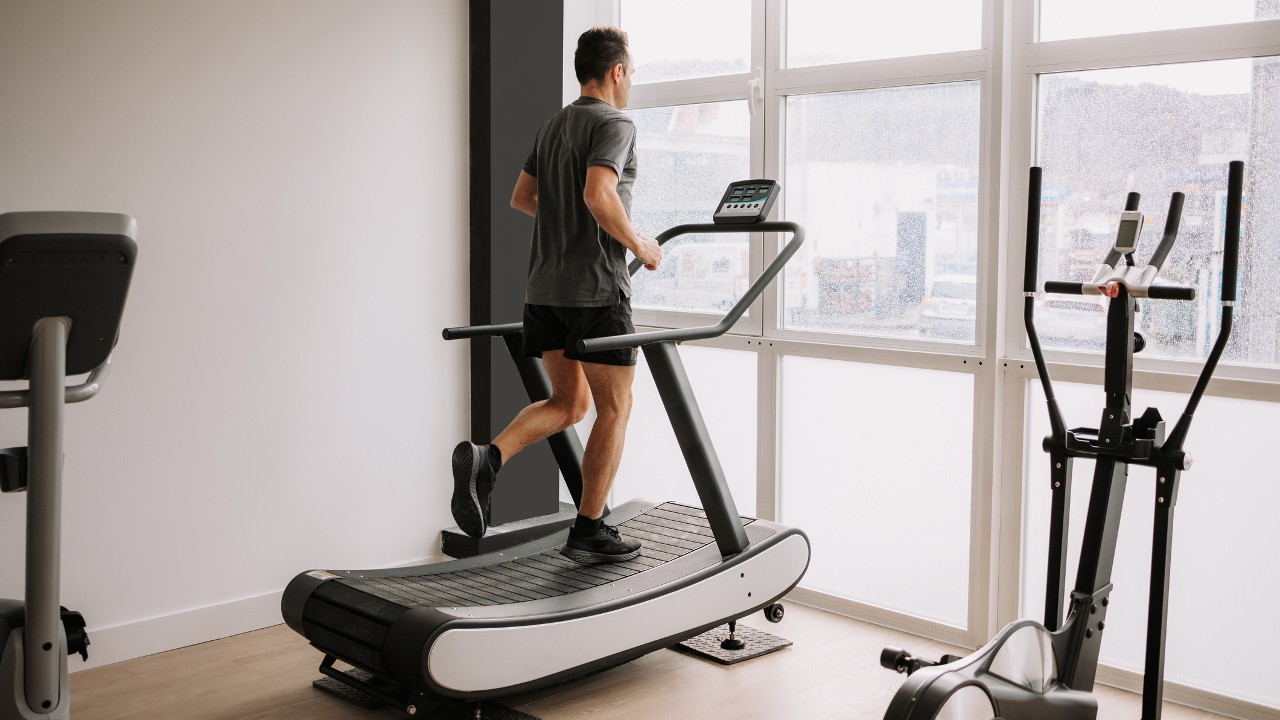
Why “The curved treadmill is brilliant because the athlete generates the speed,” says Byrne. “The stronger you become, the faster you can move the belt. This is also great for speed work.”
4 Kettlebell deadlift
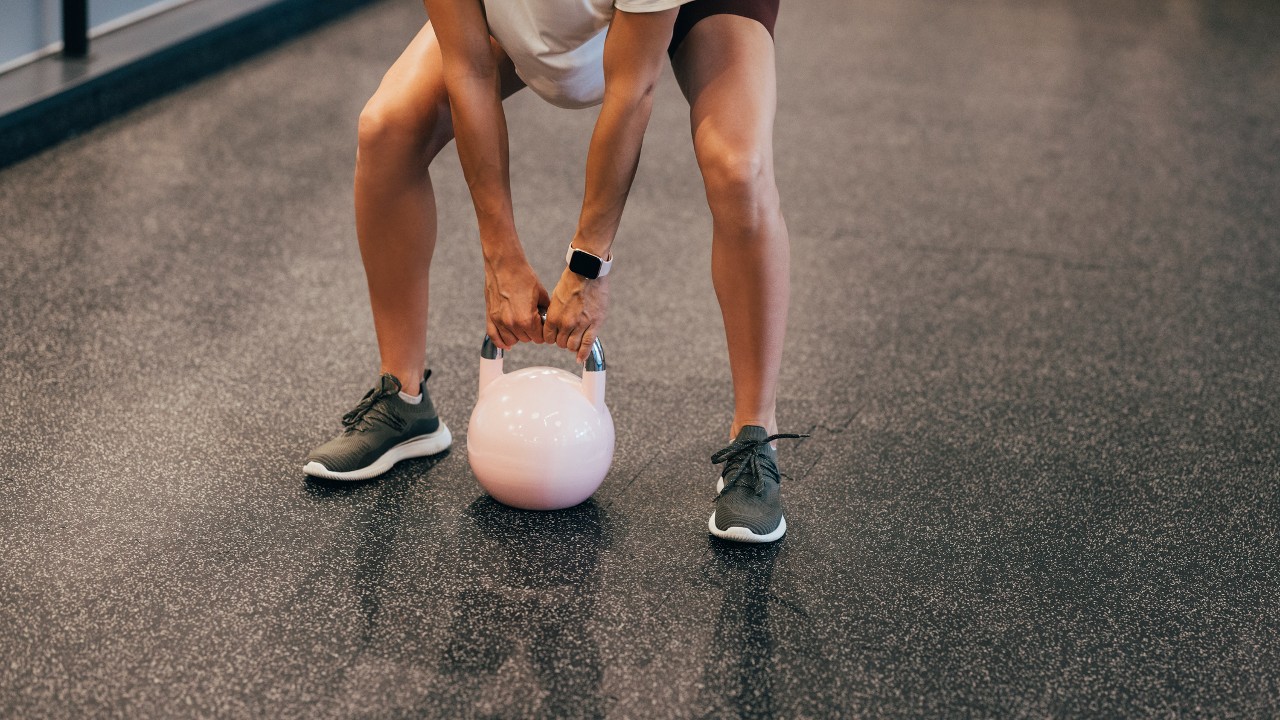
Why “Finish off your warm-up by generating power through your hips before moving on to the main phase,” says Byrne.
How Stand with your feet shoulder-width apart and a kettlebell in front of you. Hinge forwards from your hips and bend your knees slightly to reach down and take hold of the kettlebell. Keeping a flat back, drive your hips forwards and extend your knees to stand up. Reverse the move to lower the kettlebell under control.
Workout
“Sets and reps in the main phase will range from two to four sets,” says Byrne, “while reps will range from 10 to 15. Choose a weight that lets you work at around 70% effort and do not push the muscles to fatigue to avoid muscle breakdown.”
1 Trap-bar deadlift
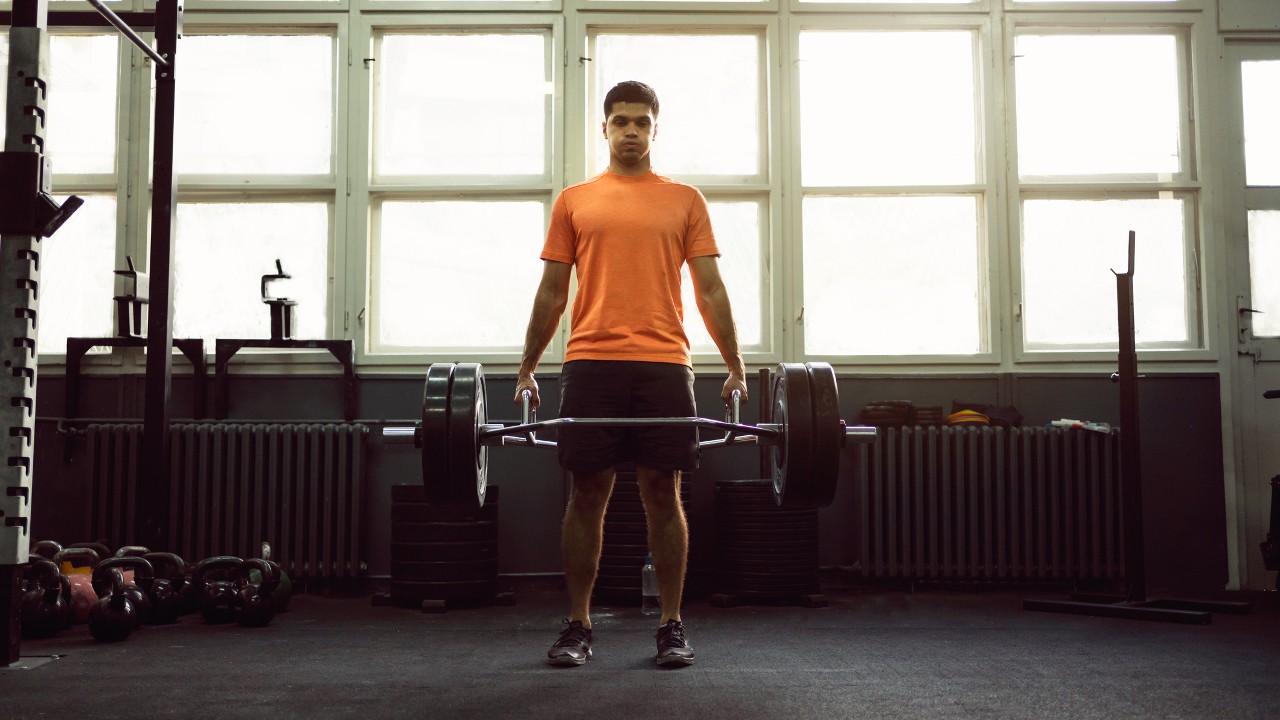
Why “The trap bar makes this exercise easier on the back compared with the conventional barbell deadlift. This is a great exercise to increase the force capability and power through the legs, which in turn improves your jump and gives your shot more of a bang!”
How Stand in the middle of a loaded trap bar. Bend your knees and hinge forwards at your hips, pushing your hips back to take hold of the handles. Lift your chest and look forwards. Keeping a straight back, drive your hips forwards and extend your knees to stand up. Lower under control.
2 Bench press
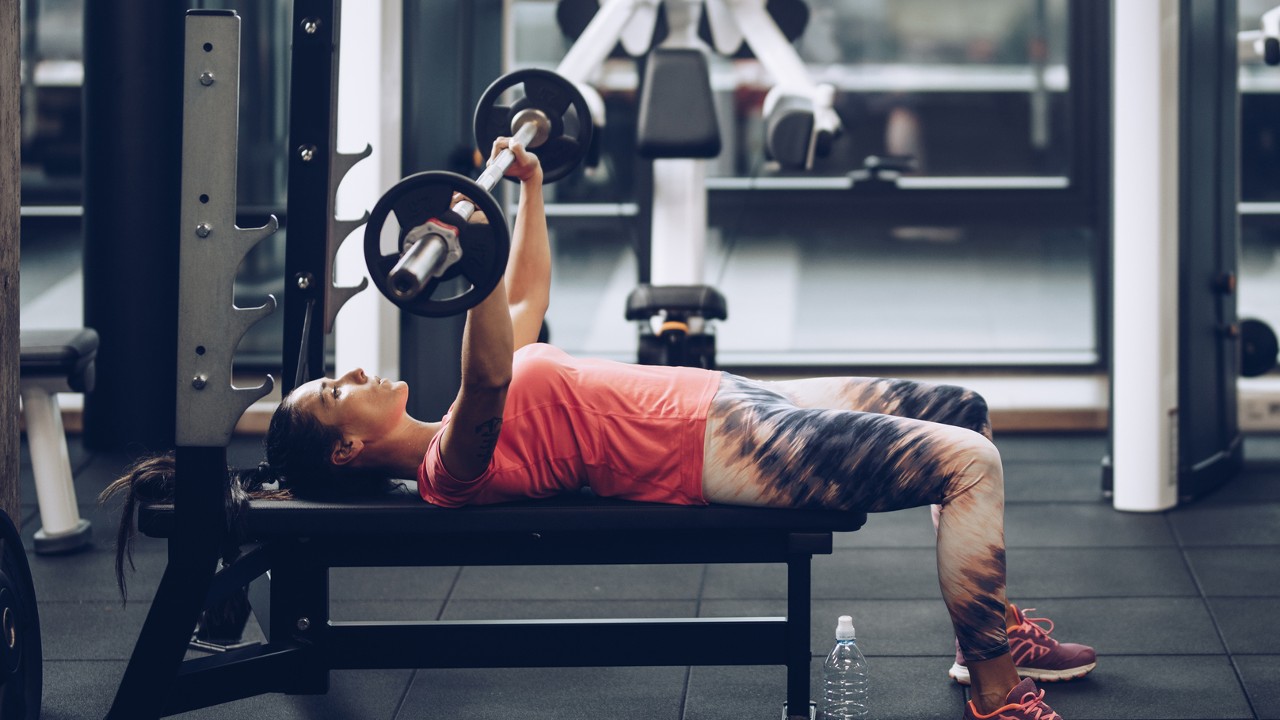
Why “Upper-body strength should also be a priority,” says Byrne. “A strong chest and shoulders can be greatly beneficial in any close physical encounters. The bench press helps build the chest muscles, increases pushing strength and will also help to strengthen your triceps.”
How Lie on a flat bench holding a barbell above your chest, with your hands just wider than shoulder-width apart. Bend your elbows and lower the bar to your chest, pause, then push the bar back to the start.
3 Single-leg dumbbell Romanian deadlifts
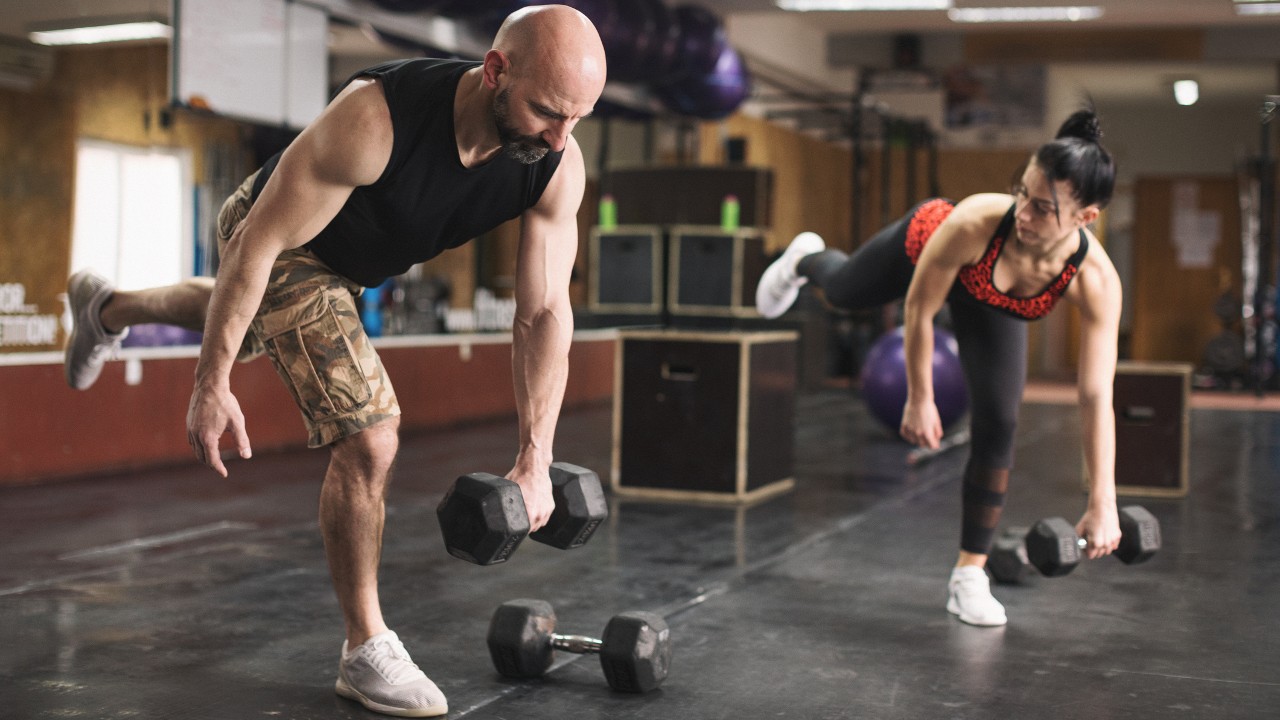
Why “For field athletes, hamstring training is crucial,” says Byrne. “The stronger and more stable your hamstrings are, the more power you can produce on the field and the smaller risk of injury and torn hamstrings.”
How Hold dumbbells in front of you, stand on one leg with a slight bend in your knee. Hinge forwards at your hips, letting your other leg lift behind you to help you balance, until you feel a slight stretch in your hamstring. Drive your hips forwards to return to standing.
4 Lateral medicine ball wall throw
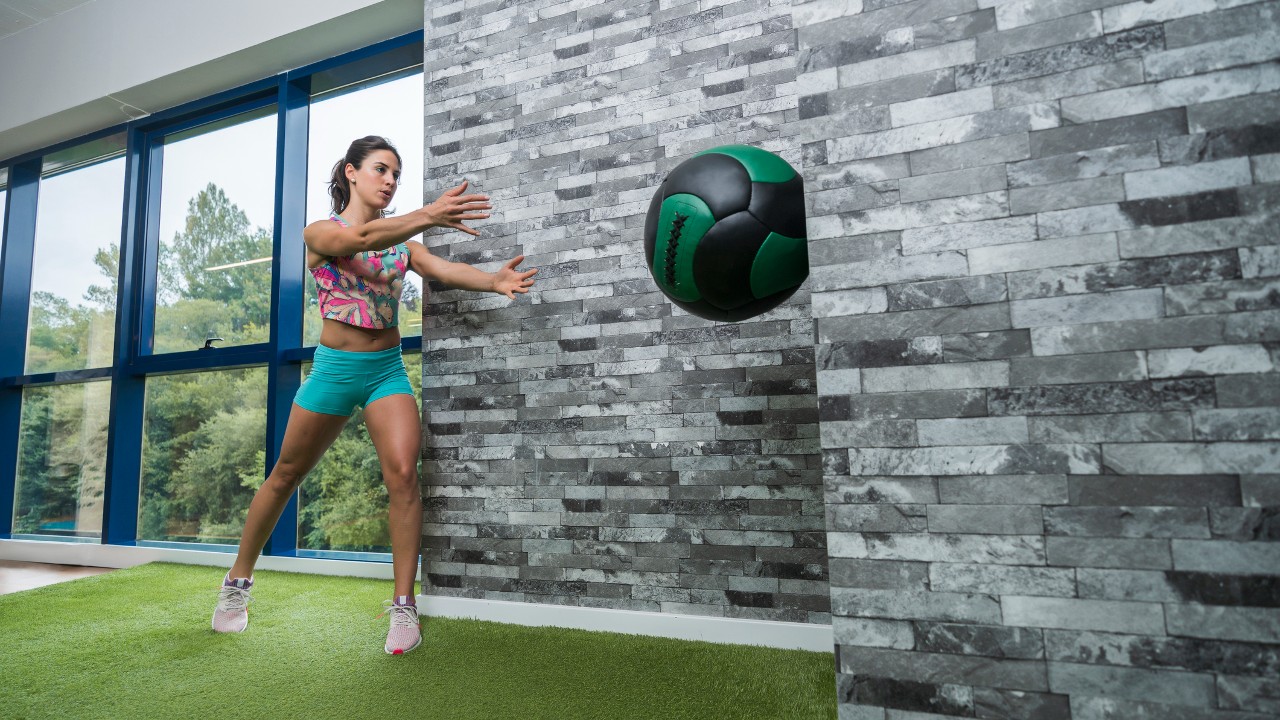
Why “This is a brilliant exercise because it generates power from twisting movements,” says Byrbe, “and reacting to the ball rebounding from the wall back develops stability. This works the abs, shoulders, quads and glutes.”
How Stand side-on to a wall holding a medicine ball. Take the medicine ball to the side of your body furthest from the wall, then twist and throw the medicine ball at the wall, catching the rebound.
5 TRX chest press
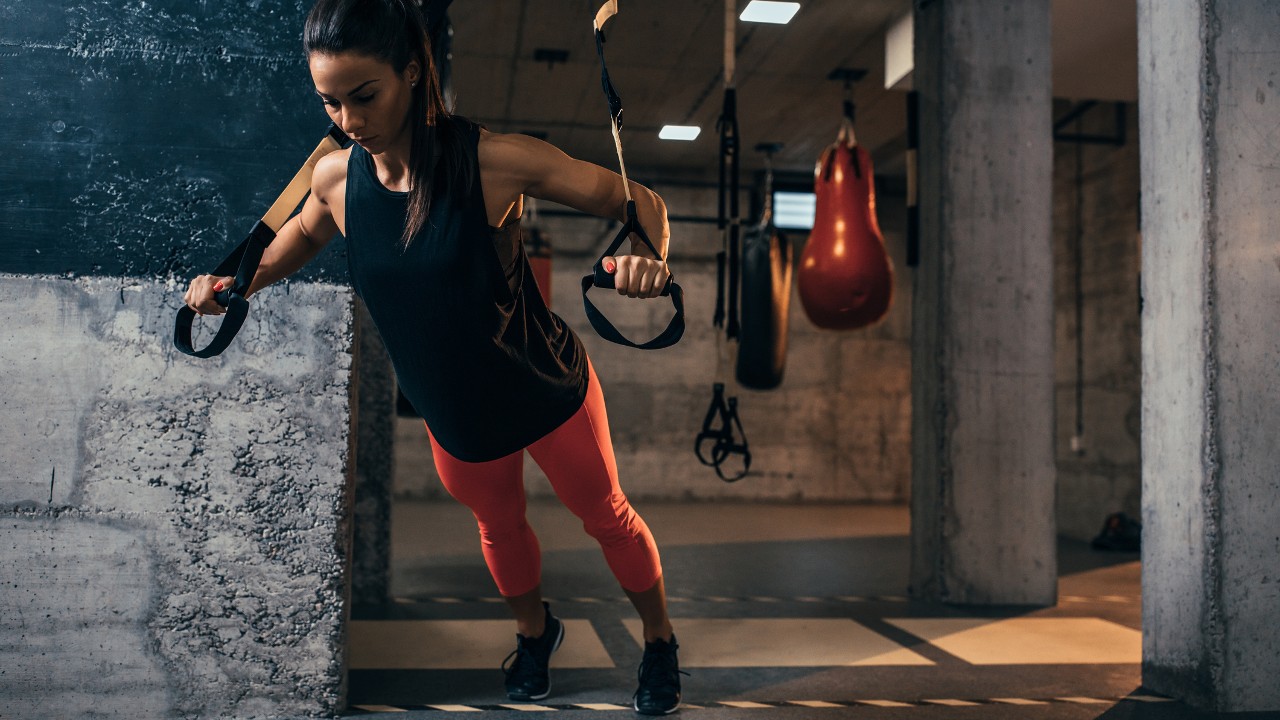
Why “The TRX builds upper-body strength and stability,” says Byrne. “The more stable the body, the less chance you’ll be pushed around. This also supports the shoulders, chest, triceps and core.”
How Facing away from the anchor point, hold the TRX handles at chest height with your arms extended. Lean forwards so your arms are supporting the weight, then walk your feet backwards towards the anchor point to make the exercise harder. Bend your elbows, pushing them out to the sides, and lower your chest to the handles. Pause, then push back to the start.
6 Dumbbell step-up
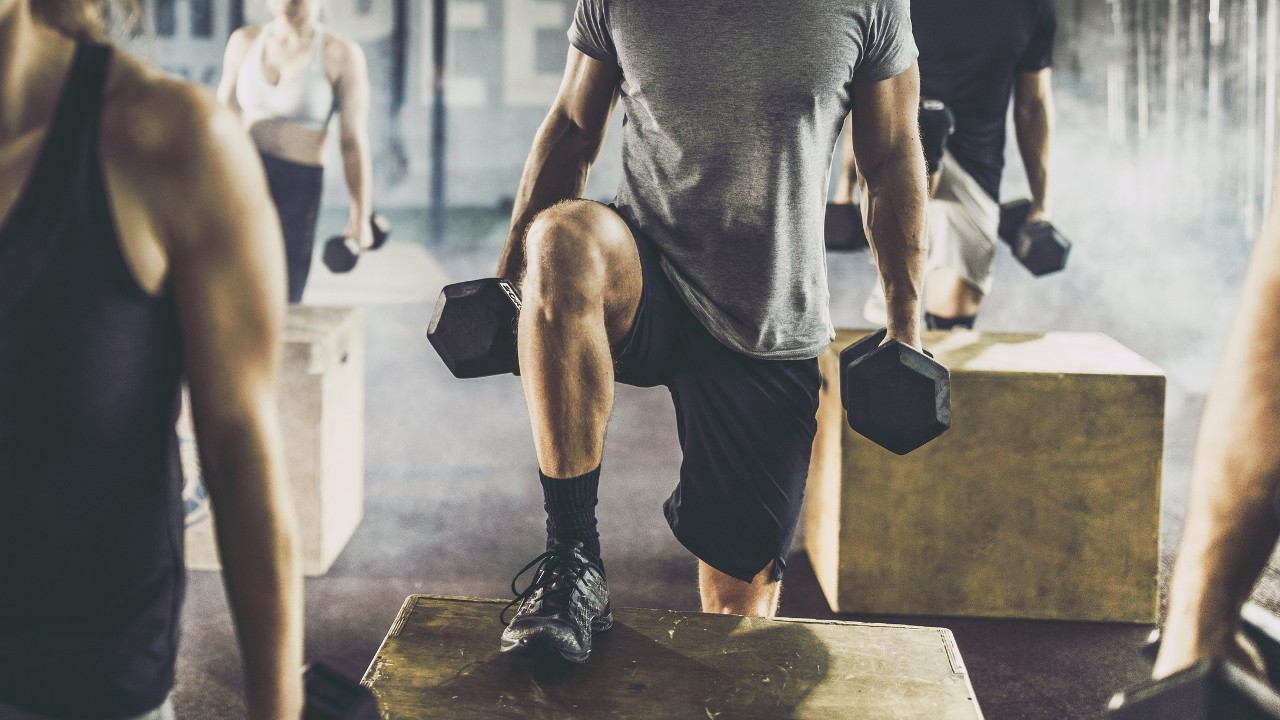
Why “This exercise increases strength in your quads along with your glutes and hamstrings,” says Byrne. “It also works the core and improves balance.”
How Face a box or other platform, holding dumbbells by your sides. Step onto the box and stand up, placing your other foot on the box. Step down with control. Either alternate legs with each rep, or do all your reps on one side and then swap.
7 Kettlebell swing
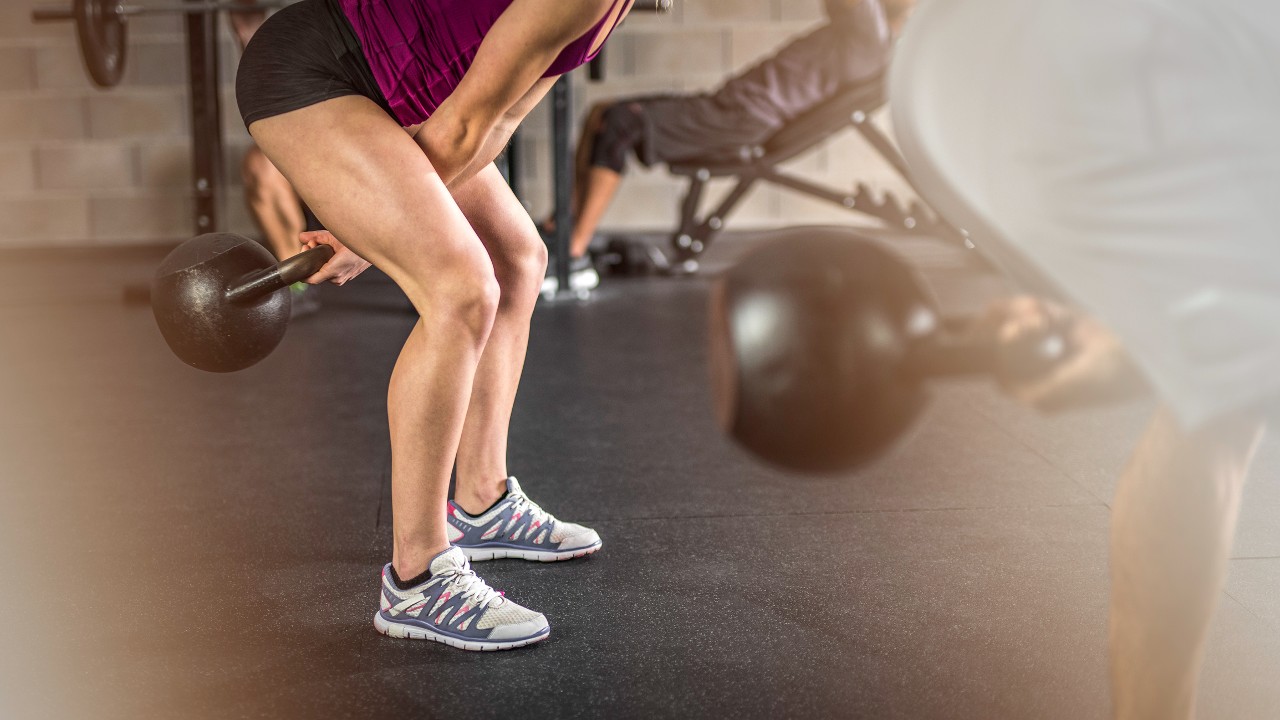
Why “This exercise will work a range of areas, including the core, hips, glutes, and shoulders,” says Byrne. “It also trains you to generate explosive power.”
How Stand with your feet shoulder-width apart, holding a kettlebell in both hands in front of you. Brace your core and, keeping your back straight, hinge forwards at your hips and bend your knees slightly to let the kettlebell swing between your legs. Drive your hips forwards to generate the power to swing the kettlebell up to chest height. Control the descent and go straight into the next rep.
Warm-down
Finish on an exercise bike, working at approximately 50% effort and then 20% effort to slowly bring the heart rate down. Follow with 15 minutes of static stretching. This stretching routine is a good place to start.
“Aqua therapy, yoga, Pilates and other forms of movement training should be included to keep athletes flexible and mobile,” says Byrne.
Adam Byrne is a personal trainer and rehabilitation specialist by background with a degree in sports science with rehabilitation and sports psychology. He has worked in the industry for over 14 years across a mix of PT, strength and conditioning, nutrition, rehabilitation, women’s health and leadership roles in various countries, in both the public and private sector. Byrne is clinical fitness lead for Nuffield Health’s flagship programmes in London, which includes quality assurance, professional leadership and development training for the rehabilitation specialists.

Jonathan Shannon was the editor of the Coach website from 2016 to 2024, developing a wide-ranging experience of health and fitness. Jonathan took up running while editing Coach and used the training plans on the site to run a sub-40min 10K, 1hr 28min half marathon and 3hr 6min marathon. He’s an advocate of cycling to work and is Coach’s e-bike reviewer, and not just because he lives up a bit of a hill. He also reviews fitness trackers and other workout gear.
